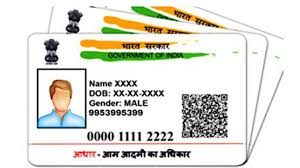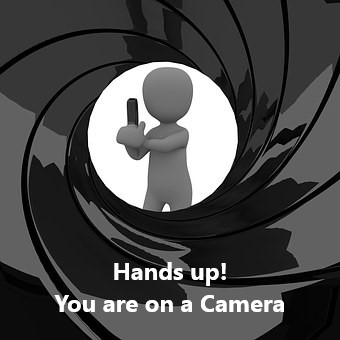The Identity Crisis: Creating more fizz than fuss
Facial Recognition

Welcome to the world of Amazon Go, a cashier-less grocery in a few cities in the US. A store where a network of cameras watch shoppers from above converting visual data into a 3-D profile by tracking hands and arm movements as they handle a product. The system sees which items shoppers pick up and bills them to their Amazon account when they leave the store. One doesn’t have to stand in a queue to make a payment to the cashier. The system tracks the movements of shopper’s bodies and identifies them and links them to their Amazon account. It doesn’t uses facial recognition to identify its customers as it wants to get into the Identity crisis.
Learn more about Amazon Go store by clicking on the following link:
https://www.amazon.com/b?ie=UTF8&node=16008589011
China takes a lead
Lets come to China. China plans to be the global leader in artificial intelligence. YITU Technologies, a Shanghai based company, has gained wide recognition for its facial scan platform. The technology can identify a person from a database of at least 2 billion people in a matter of seconds. Facial recognition technology can be called as bio-metric computer applications. It automatically identifies an individual from a database of digital images.

There are 200 million cameras which are scattered all around the country. The cameras can track big spenders in luxury retail stores, catch and identify thieves, prevent violent crimes, find fugitives. The local police in around 300 cities have started using the Dragonfly Eye system (YITU’s innovation). The system analyzes surveillance videos and identify people and cars. As a result traffic violators get the challans over the mail.
Facial Recognition intrudes privacy
In the US, San Francisco has recently voted against facial recognition. It has thus become the first US city to ban police and other government agencies from using facial recognition technology. They feel that it intrudes into their privacy.

FaceApp, a Russian mobile app that digitally alters faces, has stirred controversy this week for allegedly violating user’s privacy. The two-year-old app has been developed by a Russian company Wireless Lab that uses artificial intelligence to change your photos. You can use it to create images, young and old of yourself and even change the gender.
The users have to give their consent to a clause while downloading the app which intrudes into one’s privacy. It has thus become controversial. The clause gives the company a “non-exclusive, royalty-free, worldwide, fully-paid” rights to the photos that users upload on the platform. However users are questioning the right to privacy.
Facial Recognition when misused
China is also in trouble as it increasingly uses artificial intelligence.The US government has banned 5 Chinese technology companies linked with video surveillance technology. The US believes that China is using facial recognition technology to repress the Chinese minority community called Uighurs. Uighurs are a Muslim ethnic group in the Western part of China.
The Identity Crisis in India

The Biometric identification of each citizen has led to Aadhaar and today it has become the most important identification document of an individual. The pedigree of Aadhaar in India is very strong. The parents come from a family of Ration card and Passport. The close relatives are Driving license, Telephone bills, and Election I-card .
There was an Identity Crisis with Aadhaar at the time of launch when people couldn’t recognise their own photo in the plastic I-card. Ladies refused to acknowledge that it is their picture. On the other hand, most of the men looked more like the security guards of the apartment building.

Enter a hotel and Aadhaar is the the first thing you need to produce. You go for a driving license test and if successful, it will be delivered to the address as mentioned in the Aadhaar. Open a new savings account or withdraw a fixed deposit and you can’t do it without Aadhaar.
Aadhaar in an Identity Crisis
Aadhaar recently got into a crisis itself. This was when few Airtel subscribers discovered that their LPG subsidy was being transferred to a new savings account in an Airtel Payments Bank. The subscribers were shocked as they had never opened an account in this Bank. On investigation, they realised that the Aadhaar submitted to Airtel for opening a mobile connection, was misused by the company. The company used Aadhaar to open an account in the subscribers name in its bank without their consent. As a result Airtel was fined heavily by the authorities.
Identity crisis when India graduates to FR
Facial recognition may not work in India due to the following reasons. Please read it in a lighter tone and my apologies to the fairer sex.
You are invited to a party along with spouse in an up-market popular location and the entry is only through Facial Recognition. Half of the couples will not be able to enter as the cameras will fail to recognise their spouse. After all, the three hours she spent in the beauty parlour, changed her outlook all-together. What an embarrassing Identity crisis?

Indian women have large beautiful eyes as compared to women of other South Asian countries. Imagine a situation where your wife is asking you to visit her parents and you have told her to go all by herself. By the time it’s morning, her eyes are swollen so much that the Facial Recognition camera in her office fails to recognise her.
Beauty parlour and cosmetic companies may lose their business after facial recognition comes in India. Ladies before and after a beauty parlour using cosmetics can’t be recognised by their own men, leave aside a camera.

Identity Crisis in Daily Life
These days the gated communities have become quite strict in terms of identifying visitors. The RWA of these societies want to keep a strict vigil on all incoming visitors. The visitors are required to carry some kind of an identity card to enter the premises. This at times leads to a heated exchange of words between the security and the visitor and the only way to avoid an Identity crisis is to carry proof.
Visit any office complex in Cyber-City, Gurugram and you will encounter a similar problem. A camera mounted on a desktop will click your picture. Subsequently, you will have to fill a whole lot of personal details in a hardbound register. Apart from this, you will also need to produce an Identity card to prove that you are you. This entire task will set you back by 10 minutes and you will get delayed in the meeting by 10 minutes.
Resolving Identity Crisis
This month, Hyderabad Airport has become the first in India to launch a voluntary facial recognition system called DigiYatra. Similarly Bengaluru will follow the same.
Facial recognition is creating a lot of controversies worldwide. So what is the answer in the future for us Indians? I think we should develop a technology of using voice identification and thumb impressions. As a result, it will become a combination of 2 bio-metrics. It will be less controversial than facial and therefore people will be comfortable using it.
So next time when you check in a hotel and are asked for an Identity just spell your name in the voice recognition machine. Press your thumb and voila you have been identified.
A tip to readers so as to avoid facing an Identity Crisis
Please install the app DigiLocker on your mobile. You can then download your Aadhaar and other important documents like Driving license, Pan, LPG subscription and even 10th and 12th class certificates and many more. DigiLocker is Govt of India’s cloud-based platform for storage, sharing, and verification of documents and certificates.
Read more such stories with a tinge of fun:
The last week of the Month – the days of Bankruptcy
Acknowledgement: The Economist: Issue dt - Apr 13th 2019 / Topic - The Learning machine, Page - 52











Comments
4 Comments
[…] Identity Crisis […]
[…] Identity Crisis […]
[…] The Identity Crisis: Creating more fizz than fuss […]
[…] Identity Crisis […]
Leave a Comment